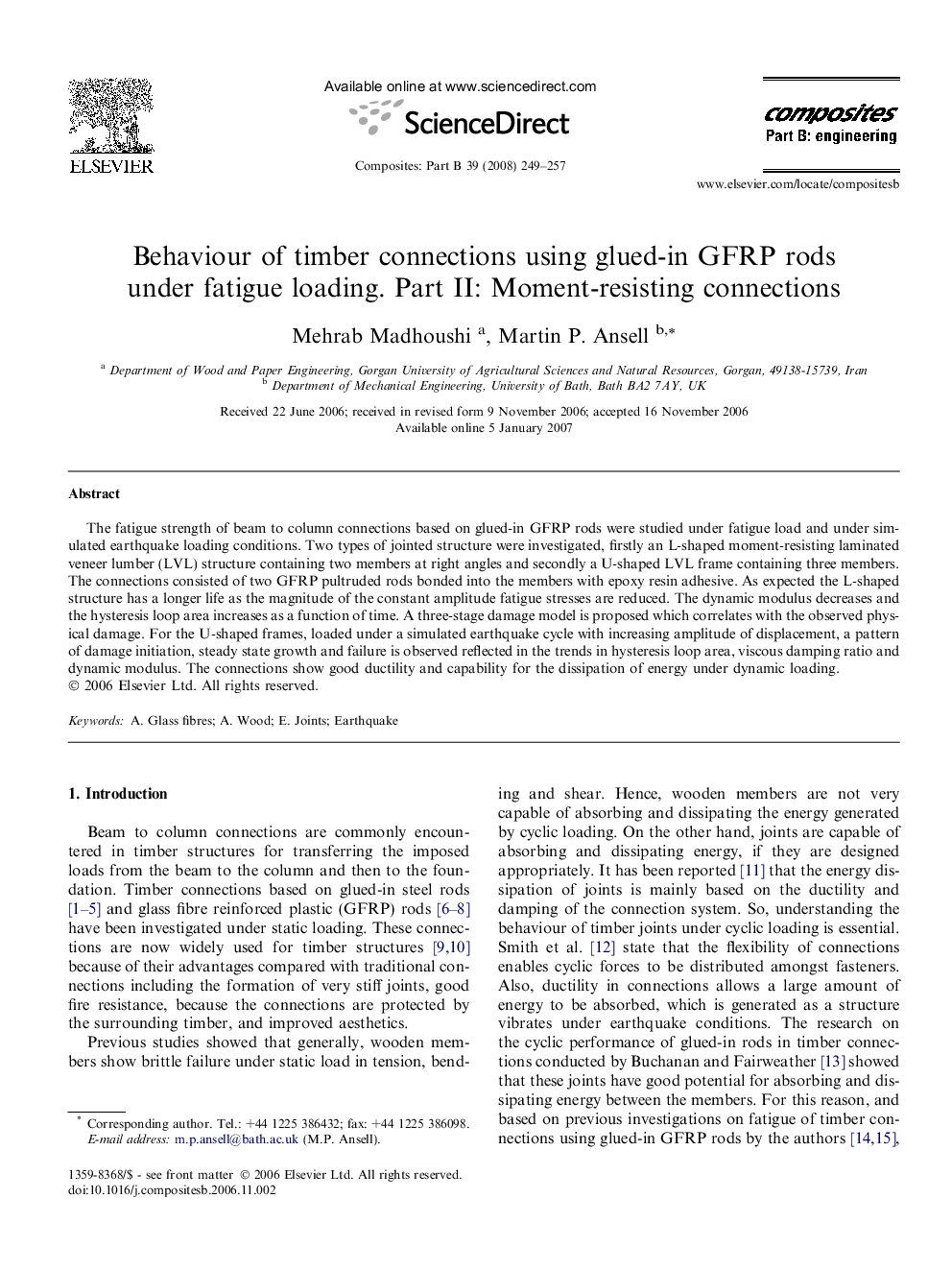| کد مقاله | کد نشریه | سال انتشار | مقاله انگلیسی | نسخه تمام متن |
|---|---|---|---|---|
| 819617 | 906574 | 2008 | 9 صفحه PDF | دانلود رایگان |

The fatigue strength of beam to column connections based on glued-in GFRP rods were studied under fatigue load and under simulated earthquake loading conditions. Two types of jointed structure were investigated, firstly an L-shaped moment-resisting laminated veneer lumber (LVL) structure containing two members at right angles and secondly a U-shaped LVL frame containing three members. The connections consisted of two GFRP pultruded rods bonded into the members with epoxy resin adhesive. As expected the L-shaped structure has a longer life as the magnitude of the constant amplitude fatigue stresses are reduced. The dynamic modulus decreases and the hysteresis loop area increases as a function of time. A three-stage damage model is proposed which correlates with the observed physical damage. For the U-shaped frames, loaded under a simulated earthquake cycle with increasing amplitude of displacement, a pattern of damage initiation, steady state growth and failure is observed reflected in the trends in hysteresis loop area, viscous damping ratio and dynamic modulus. The connections show good ductility and capability for the dissipation of energy under dynamic loading.
Journal: Composites Part B: Engineering - Volume 39, Issue 2, March 2008, Pages 249–257